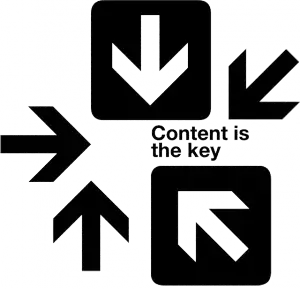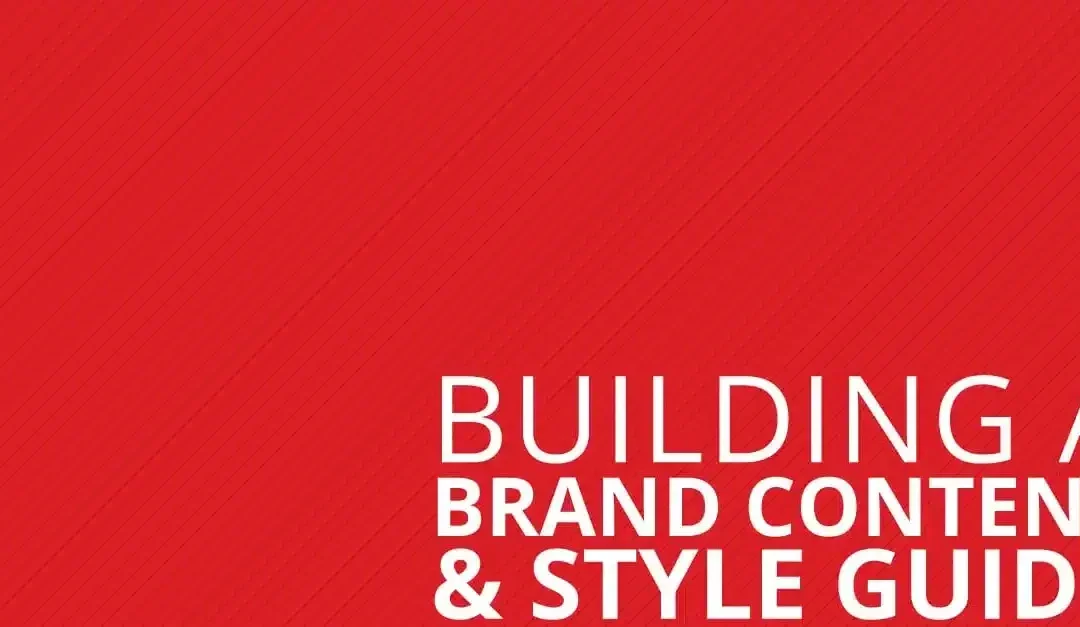Every company, large or small, needs a set of brand style and content guidelines to live by. These guidelines are set in place to keep brand identity intact. Depending on the size and complexity of the business, these guidelines could range from a few to several hundred pages.
This piece will discuss the importance of having this tool for your business, what to incorporate into yours and some simple tips & tricks to building a brand style and content guide yourself.
THE IMPORTANCE OF A BRAND CONTENT AND STYLE GUIDE
Having this type of guide for 
- Show your value
- Give understanding to who are
- Create consistency
- Build and keep relationships
- Manage perception
- Maintain control over content and design
- Look professional
WHAT BASIC THINGS SHOULD YOU INCLUDE IN YOUR GUIDE?
The following may seem like a long list of things to include in your guide, but once you take it all in you will see the importance in each one.
- Strategic Brand Overview – This should be short and to the point. It is in place to clearly show the vision for design and specific keywords to keep in mind while your team is designing and writing content
- Logos– For both print and web, most brands have different styles and sizes of their logo. Be sure to give the minimums and maximums here for all mediums. Be sure to include examples to reference here.
- Colors – Always include color pallets for each medium being used. Include CMYK, Pantones (when relevant) and RGB. Include alternatives to each as not every medium is different on what is available. A great example of this is when Ferrari creates and advertisement they always use Ferrari red and nothing else. This example may seem obvious, but others may not be and that is where a guide comes into play.
- Spacing – Include reference items to ensure your designs end up with enough white space.
- Fonts – Define typefaces that are supposed to be used here. Include sizes, line height, spacing before and after letters, colors, body font vs. headline text, etc. Give examples, references and locations of each for different mediums (print vs. web).
- Layouts – Grids and layouts are important to the end result of each design piece. Print vs. web is very different and therefore needs a standard to reference.
- Copy Writing Content Guide – Create a copy writing guide in order to keep the flow and consistency of the writing in your designs. For example list how dates should be listed or for number 10 and higher should use figures instead.
- Tone of Voice – A large portion of how a brand is seen and heard is the tone in which their designs, advertisements or websites give off. When more than one person is writing the copy, it is important to define the tone of voice to be used.
- Web guidelines, Coding Styles & Navigation– The web guidelines section can get a little complicated and overwhelming as there is a lot to include. Things to consider in this section are the hierarchy of buttons on your pages or defining the size and location of all icons and badges. Web guidelines are important because they keep consistency between anything from buttons to navigation to coding styles for your web presence.
- Contacts of Decision Makers– Your team members need to know who to contact when they have questions on a particular portion of the brand style and content guide. Be sure to keep this section updated as roles change.
TIPS & TRICKS TO BUILDING YOUR BRAND STYLE CONTENT GUIDE
- Guide not Dictate – Your employees still need to have a voice and have the ability to do what they do best so guide them on their journey, don’t dictate every single detail.
- Give Examples – Giving strong examples within each section will give your writers and designers more to go on and will alleviate questions and the amount of error.
- Give Options – Each project is different and should have a variety of options to choose from. For example, show your different fonts that are allowed as well as colors therefore your designers can choose from each piece to make a cohesive piece.
- Be Specific – When needed, be very specific. No explanation needed.
- Think Creatively – Be creative with your guide and how it is presented to everyone. Remember, you are working in a creative environment and everything should reflect that, even your guide.
- Explain Your Choices – Not everyone will understand why the business has a certain standard or guideline to follow, so explain it. Giving your reasoning will help your designers understand and make better, more cohesive choices.
- Be Willing to Change & Improve – Be willing to change when a better idea is presented and still fits your brand and tone. Be willing to allow creative independence and improvement.
FINAL THOUGHTS
When you doubt the importance of creating a guide such as this, just try to think big picture. In order to get the end results you desire, the foundation must be strong. Take the time to build your Brand Style & Content Guide, your brand will be stronger because of it.
“Life is a great big canvas, throw all the paint you can at it!” – Author Unknown
